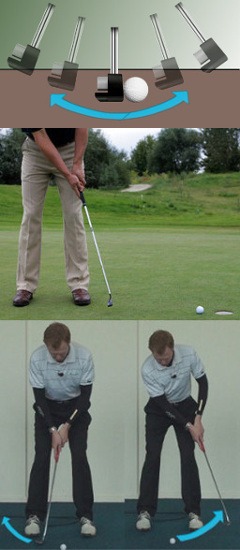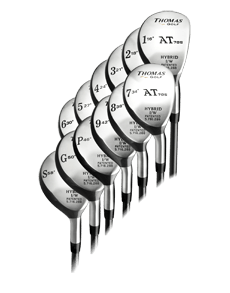
Finding your putting style involves discovering the technique and approach that works best for you. Here are the top three tips to help you find your putting style:
- Experiment with Different Grips: The grip is a fundamental aspect of putting, and there are various grip styles to choose from. Experiment with different grips, such as the traditional overlapping grip, the cross-handed grip, or the claw grip. Try each grip and see which one feels most comfortable and provides you with better control and consistency.
- Test Different Stances and Alignment: Explore different putting stances and alignment techniques to find what suits you best. Some golfers prefer a square stance with feet parallel to the target line, while others find success with an open or closed stance. Experiment with variations and determine which stance and alignment help you align the putter face to the target accurately and consistently.
- Adapt Stroke Length and Arc: The length of your putting stroke and the type of arc (straight-back-and-through or slight arc) can significantly impact your putting style. Some golfers prefer a shorter and more compact stroke, while others benefit from a longer, flowing stroke. Additionally, the type of arc in your stroke can affect your ability to square the putter face at impact. Practice different stroke lengths and arcs to identify the style that feels most natural and produces consistent results for you.
It's important to note that finding your putting style is a personal journey, and what works for one golfer may not work for another. Experimenting with different techniques and being open to adjustments can help you discover your unique style. Additionally, seeking guidance from a golf instructor or putting coach can provide valuable insights and help you refine your technique based on your individual strengths and weaknesses. Regular practice, self-awareness, and feedback from others will ultimately guide you towards finding the putting style that suits you best.
As is always the case in golf, the best way to solve a problem is through practice. By spending plenty of time on the practice green, you can work out which putting styles is going to be the most successful for you in the long run. Nearly every golf course in the world has a practice putting green available, and most of them are free to use. With so much opportunity for putting practice, the only thing standing between you and better performance on the greens is time and hard work.
To use practice putting sessions as a way to figure out what kind of putter you should be, consider the tips listed below.
- Test yourself on short putts. As was mentioned earlier, a golfer who uses an aggressive putting style is going to face more comeback putts. How good are you at holing out from three feet? There is only one way to know – test yourself on the practice green. Spend some of your practice time hitting a number of short putts to see how you fare.
- Of course, you can work on getting better over time, but you want to determine where you are at right now. Do you think you’ll be up to the challenge of making all of those short putts that will result from being an aggressive putter? If not, it might be best to stick with conservative putting for now. You can always revisit this topic later if you find that your short putting skills have improved.
- Find your natural tendency. Set yourself up in a spot on the practice green where you can hit putts of various lengths to a number of different holes. On each putt, try not to think too much about your speed – just pick a reasonable line and send the ball on its way. Where do these putts end up?
- Do you tend to rush the ball up toward the hole, or is your natural inclination to use a gentle speed? The results of these putts should tell you a lot about what kind of putting style will fit you best on the course. If you are naturally putting aggressively, it might be hard to go against that inclination. Or, if you feel most comfortable playing it safe, sticking with that habit may yield optimal results.
- A mid-range test. One of the biggest differentiating factors between golfers – on the greens, at least – is the ability to knock in mid-range putts. When you face a putt between 10 – 15 feet, you aren’t going to worry much about three-putting. Rather, you are going to be hoping to knock the ball in with a single stroke.
- To test each of these speed options, find a spot on the practice green where you can hit a series of 10-footers. Roll five with cautious speed, and then roll five with enough pace to run the ball past the hole a couple feet. What do the results look like? Do you tend to make more putts when you are more aggressive? Did you leave any of the softer putts short of the hole? This quick drill is another great way to evaluate these two putting options.
For most golfers, the right approach to putting speed is going to become clear after just a bit of practice. Most likely, you will naturally be more comfortable with one plan as opposed to the other, and that is the plan you’ll use moving forward. If you are having trouble making up your mind, don’t rush to a decision. Keep practicing when you have time and let the process play itself out naturally. At some point, it will become clear which side of this equation you should land on.





